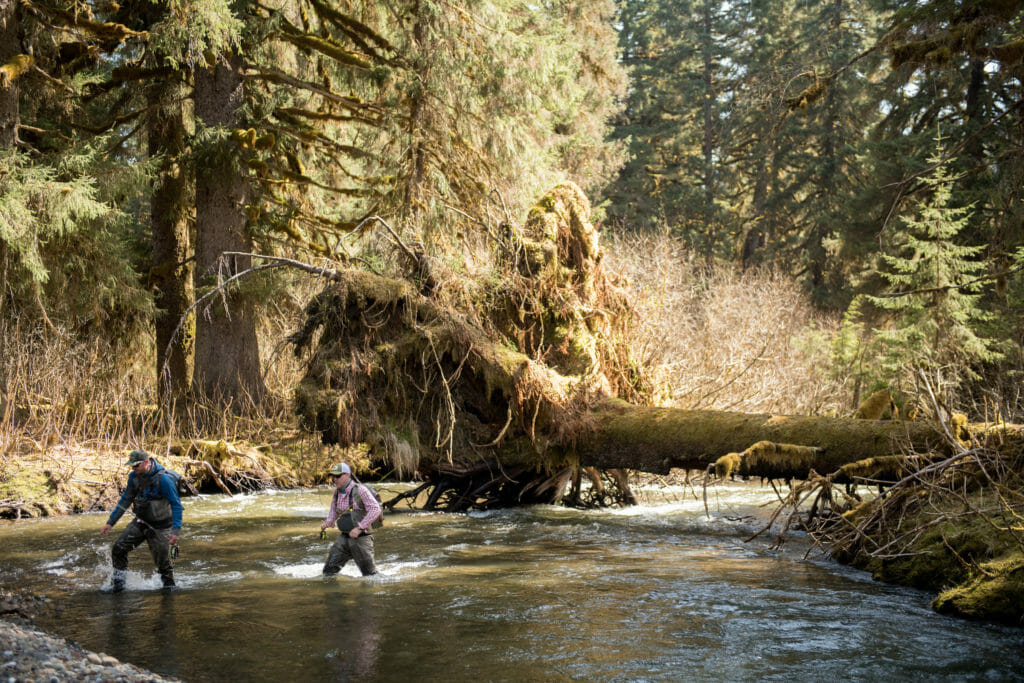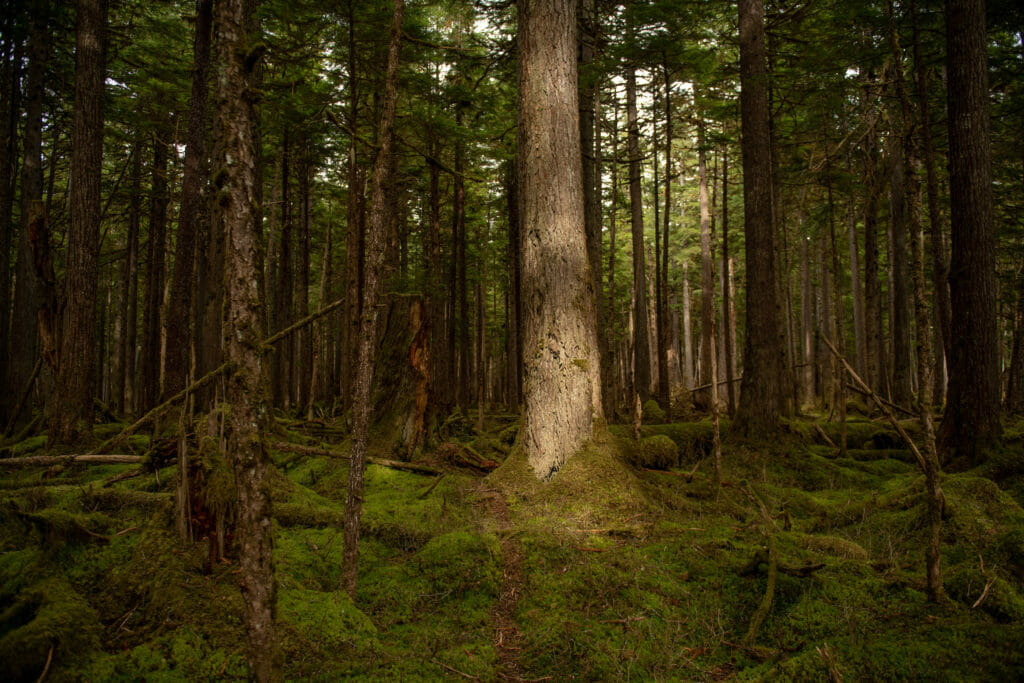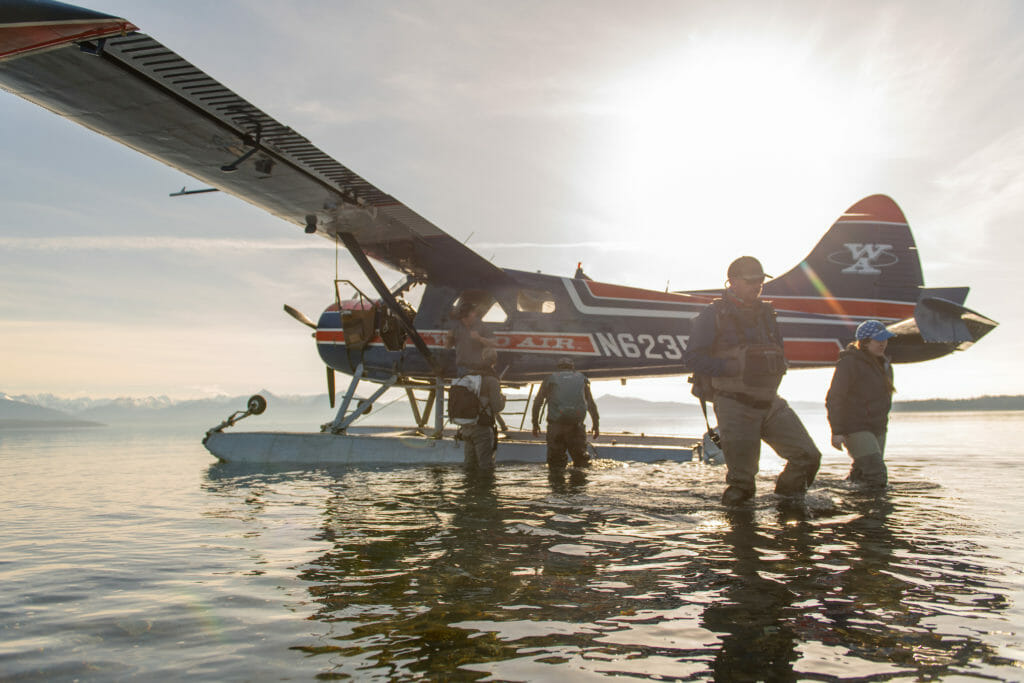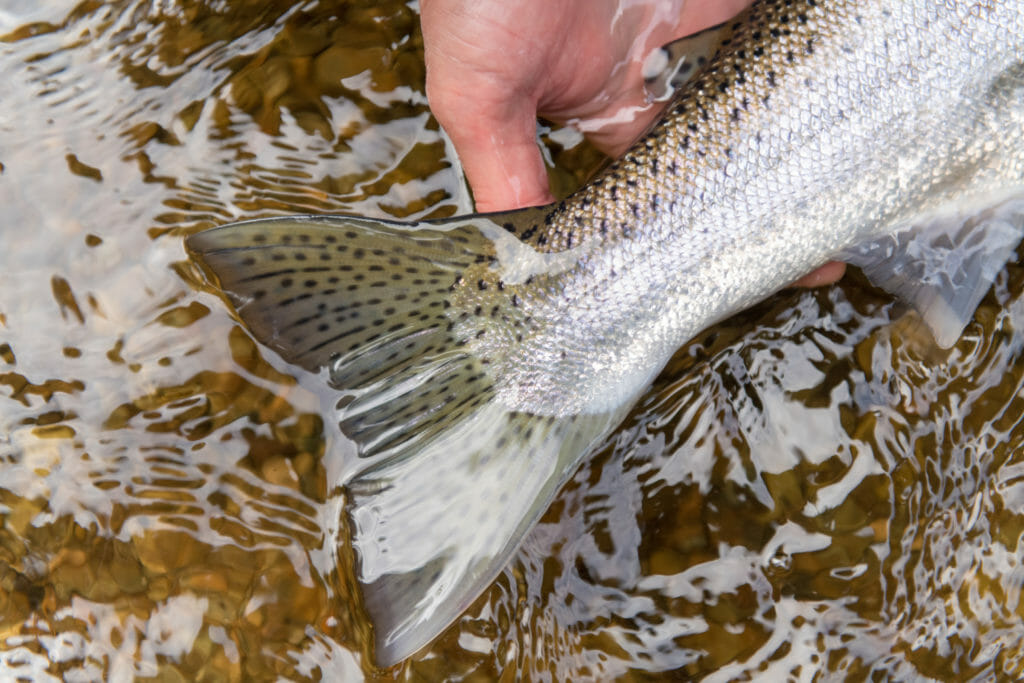As the Forest Service revises the Roadless Rule, the future of one of the last untouched rainforests hangs in balance
By Christine Peterson

Like much of Alaska, the Tongass National Forest operates in extremes.
It’s the largest, intact temperate rainforest in the world.
It produces more wild salmon than all other national forests combined, and is one of the few places where all North American pacific salmon return in healthy numbers. During its best years, commercial fishermen catch more than 100 million salmon, and still let untold numbers travel upstream to reproduce.

It contains some of the most abundant steelhead runs in the world, altogether producing tens of thousands of fish.
It has ancient, old-growth Sitka spruce spanning nearly 16 feet across that grow on the coast. It also has crooked, spindly black spruce that fight harsh wind and temperatures in marshy, muskeg soil.
It is a place that has been exploited, explored, feared and revered for centuries for everything it contains. But for all of its extremes, the fight over the future of the Tongass National Forest has been a lesson in compromise, one that was more than a decade in the making and now hangs in the balance.

A case for roadless areas
When the 2001 Roadless Areas Conservation Rule passed, debate swirled about the possibility of excluding the Tongass. The forest comprises about 80 percent of southeast Alaska, or nearly 17 million acres. Industrial logging had cut two-thirds of the productive old-growth forest on the Tongass, causing stream sedimentation, increased water temperatures, and in more than 1,000 instances impeding salmon migration past road crossings. Logging had historically been a critical – though heavily subsidized – part of the local economy. While it had largely faded and now accounts for less than 1 percent of local jobs, giving way to growth in the fishing and tourism industries that now account for 26 percent of local employment, some wanted a reemergence of the previous economy.
The forest comprises about 80 percent of southeast Alaska, or nearly 17 million acres.
So from 2003 to 2011, there was a Tongass-specific exemption that allowed road building and commercial logging throughout the Tongass. A judge ultimately decided the exemption was illegal, but, even before the ruling, groups had come together in a series of collaborations to find a solution that would work for everyone.

“We’ve sought collaborative solutions on the Tongass for many years and long advocated for those areas that are most important for fish and wildlife. Roadless Areas, and places known as the Tongass 77 that were identified based on input from scientists and the real-world experience of outfitters, guides and commercial fishermen, have become our top priority,” said Austin Williams, the Alaska director of law and policy for Trout Unlimited.
In 2010, the U.S. Forest Service called for a change in focus to second-growth trees for logging – those that grew after initial logging efforts. A 2016 forest plan amendment followed that put in place a 15-year transition from old-growth to young-growth logging. It made new trees available quicker, but phased out harvest of ancient, irreplaceable ones.
“Through years of collaborative efforts, the Tongass has sought a resolution to long-standing conflicts regarding timber management,” Earl Stewart, then-Tongass Forest Supervisor said in a news release in 2016. “This amendment is the culmination of those collaborative efforts, and aligned with the unanimous recommendations of the Tongass Advisory Committee (TAC).”
And now that plan is under attack.
The Department of Agriculture is in the midst of another rule making and, at the urging of the State of Alaska and the behest of old-growth logging special interests, President Trump has ordered a repeal of the roadless rule on the Tongass. If finalized, this new Tongass exemption to the Roadless Rule would open up more than 9 million new acres to unsustainable and heavily subsidized commercial logging and road building that threatens some of the best remaining fish and wildlife habitat on the forest.
While groups like Trout Unlimited don’t oppose all logging, it can and should be done sustainably and through collaborative processes, not as part of a backroom deal that serves timber special interests at the expense of fishing, hunting, recreation, and other forest users.

What can be done?
Anecdotal stories of priceless hunting, fishing and guiding experiences spin throughout southeast Alaska, but some of the most compelling data to support the current Roadless Rule comes in the form of statistics.
In 2016, almost 45,000 people worked in southeast Alaska, 29 percent for the government, 17 percent in tourism and 9 percent in the seafood industry. Less than 1 percent worked in the timber industry.
The area had $2.2 billion in workforce earnings. Of those, 35 percent came from the government, 11 percent from tourism, 10 percent from seafood, and 0.7 percent from timber.
And those tourism numbers are only increasing. Between 2014 and 2016, visitor industry employment increased by 12 percent, helping to offset job losses in nearly all other industries.
The Roadless Rule is not meant to prohibit logging, mining or other consumptive uses in the forests. Mining is still allowed, as are new mining claims. New roads for transportation, energy development, wildfire and forest health projects are allowed. Since the Roadless Rule became official, the Forest Service has approved every one of the 58 requests for projects in roadless areas in Alaska.
“There’s some flexibility built into the Roadless Rule to allow projects that are important to local communities, it’s not a blanket, no-roads restriction,” Williams said.
Fiscally, building new roads for timber in a forest like the Tongass often just doesn’t make sense. In May 2018, the Forest Service spent just over $3 million building timber roads on the Kuiu Islands after two prior offering of that sale received no bids. The minimum required bid was less than $200,000, but by the time the sale closed in June, it still had received no bids. More than $3 million was essentially flushed down the drain.
“Roadless areas put food on our plate and money in our pocket. There’s still room for forest products in the Tongass, but it needs to be done in a sustainable manner that doesn’t displace hunting, fishing, tourism and so forth.”
Austin Williams, Alaska director of law and policy for Trout Unlimited
“The other issue is that road construction, in particular in southeast Alaska, is hugely expensive. We have great costs associated with logging, road construction and these are costs ultimately born by tax payers,” Williams said. “We need to figure out a way to not hurt the bread winners in the region by logging old growth and figure out how to make new products and meet new markets using the young growth timber base, which relies on existing roaded areas without going into new roadless areas.”
The Tongass should be managed around compromise. But opening the nation’s largest remining temperate rainforest to unsustainable and expensive logging that may not ultimately make much money should not be done at the expense of a burgeoning tourism industry.
“Roadless areas put food on our plate and money in our pocket,” said Williams. “There’s still room for forest products in the Tongass, but it needs to be done in a sustainable manner that doesn’t displace hunting, fishing, tourism and so forth.”
A plan that does this already exists after years of collaboration, and should be allowed to work.



